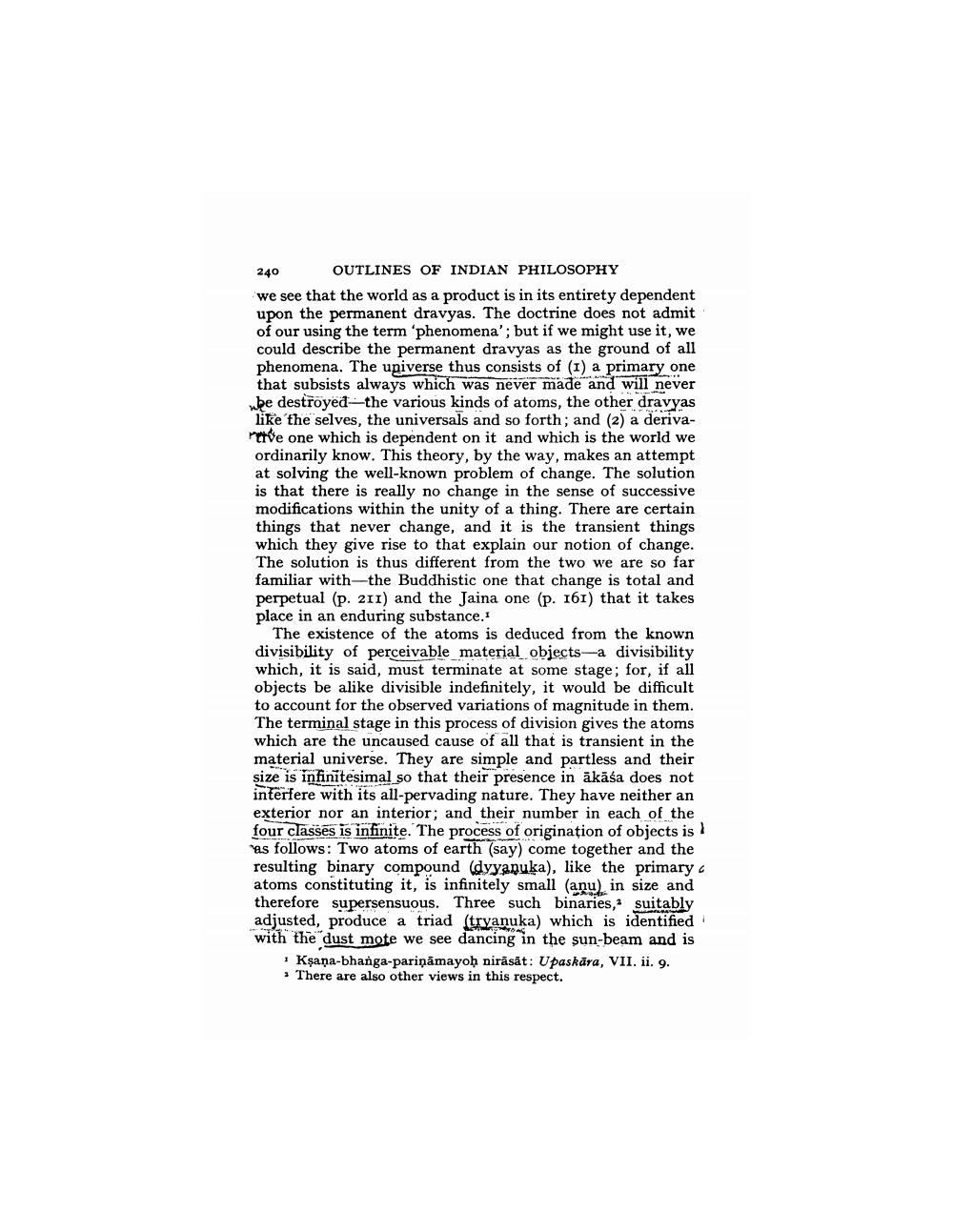________________
240 OUTLINES OF INDIAN PHILOSOPHY we see that the world as a product is in its entirety dependent upon the permanent dravyas. The doctrine does not admit of our using the term 'phenomena'; but if we might use it, we could describe the permanent dravyas as the ground of all phenomena. The universe thus consists of (1) a primary one that subsists always which was never made and will never be destroyed the various kinds of atoms, the other dravyas like the selves, the universals and so forth; and (2) a derivamere one which is dependent on it and which is the world we ordinarily know. This theory, by the way, makes an attempt at solving the well-known problem of change. The solution is that there is really no change in the sense of successive modifications within the unity of a thing. There are certain things that never change, and it is the transient things which they give rise to that explain our notion of change. The solution is thus different from the two we are so far familiar with the Buddhistic one that change is total and perpetual (p. 211) and the Jaina one (p. 161) that it takes place in an enduring substance.
The existence of the atoms is deduced from the known divisibility of perceivable material objects-a divisibility which, it is said, must terminate at some stage; for, if all objects be alike divisible indefinitely, it would be difficult to account for the observed variations of magnitude in them. The terminal stage in this process of division gives the atoms which are the uncaused cause of all that is transient in the material universe. They are simple and partless and their size is infinitesimal so that their presence in ākāśa does not interfere with its all-pervading nature. They have neither an exterior nor an interior; and their number in each of the four classes is infinite. The process of origination of objects is as follows: Two atoms of earth (say) come together and the resulting binary compound (dyyapuka), like the primary atoms constituting it, is infinitely small (aņu) in size and therefore supersensuous. Three such binaries,* suitably adjusted, produce a triad (tryanuka) which is identified with the dust mote we see dancing in the sun-beam and is
Kșana-bhanga-pariņāmayoḥ nirāsät: Upaskāra, VII. ii. 9. • There are also other views in this respect.




